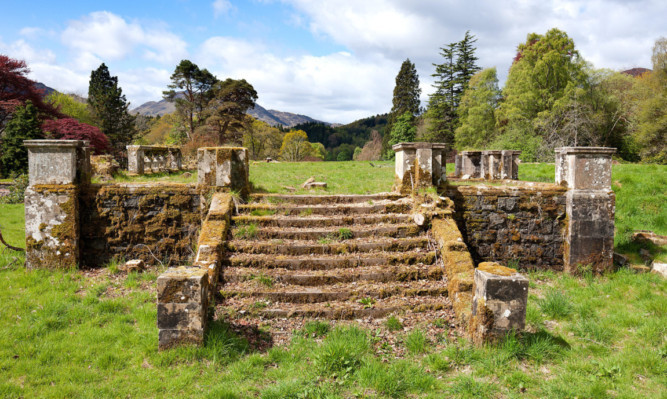A “lost” Perthshire garden may recapture some of its former glory if a new owner can be found for the site.
Once regarded as one of the finest gardens in Scotland, Dunira, between Comrie and St Fillans, is now largely overgrown after more than 60 years of neglect.
Up for sale for offers over £1.2 million, the site enjoys detailed planning permission for a house, but there is also a legal obligation to restore the grounds.
The site, which lies nine miles from Crieff, was once home to one of the most lavish landscape projects in Scotland.
The estate was sold in 1919 to a wealthy Glasgow ship owner called Alexander Macbeth who shortly afterwards gifted it to his son, William.
William modernised the Victorian mansion and hired the noted landscape architect Thomas Mawson to create a garden.
Mawson, the preeminent landscape architect and garden designer of his time, worked extensively at home and abroad and was known as the “Capability Brown of Empire.”
He fell under the spell of Dunira’s magnificent setting and described it as “one of the most beautiful estates it has ever been my pleasure to study.”
Nevertheless, in his autobiography he was less than complimentary about what he found there, saying: “Originally what passed for the gardens was a number of uninteresting grass slopes, unrelieved by flower bed or shrub, to all appearances arranged by a waterworks engineer with railway experience.”
Mawson was given a free hand to replan the gardens as he wanted, without any apparent restriction on budget.
His design solution comprised hard architectural features, walls, paths and water features, softened by planting and separate areas devoted to different activities.
In its heyday, Dunira was considered to be the finest garden in Scotland.
In 1937 William Macbeth put Dunira on the market, and a sumptuous sale catalogue was produced, documenting the estate as it then was.
However, the estate, which then covered almost 7,000 acres, failed to sell.
More recently, Dunira was one of eight lost gardens featured in a Channel 4 television series and in the book of the same name by Andrea Jones.
Mawson’s rose garden was restored for the television series but has not been maintained.
The house was used as a military convalescent home during the Second World War.
In 1947, with some patients still in residence and the Macbeth family preparing to move back in, a catastrophic fire reduced the house to a charred ruin.
William Macbeth died in 1948 and Dunira was sold by his widow in 1950.
The estate was subsequently broken up, and without the house as its raison d’tre the garden slowly and inexorably slipped into decay.
The last remnants of the house were demolished in 2006.
Savills, who are selling the site, say: “What were once stunning gardens are now in a poor state of repair, overgrown and unmanaged. Part of the consent to construct a major new house on the site requires the restoration of the gardens back to a managed and cared-for condition.
“The basic structure of the original gardens is still evident and documented, and this has to be looked upon as an exciting restoration project, which would ultimately create a very special place to live.
“The Lost Gardens restoration of the rose garden, although since abandoned, demonstrated the potential.”
rburdge@thecourier.co.uk
